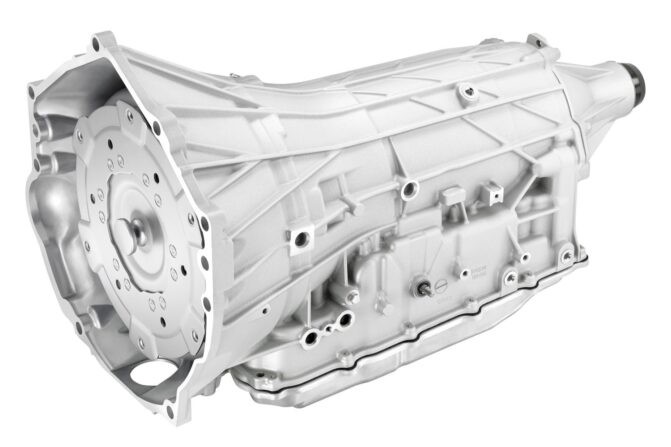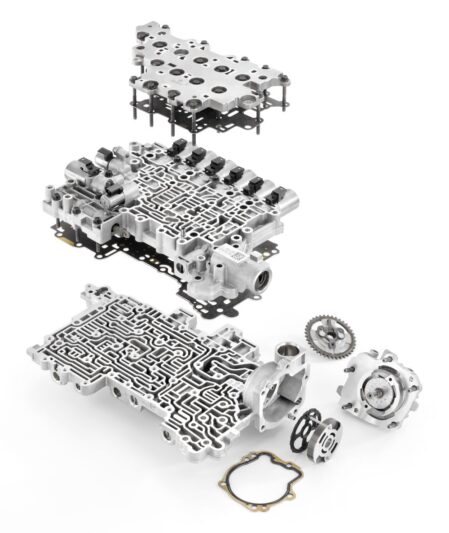A transmission control module (TCM) is a critical component for automatic gearboxes. They’re used for controlling shift points on automatics and overseeing the proper working of your car’s transmission and transaxle. But, in the event of a breakdown, you might have to find and reset it if the situation demands it. But, where is the transmission control module located in a Chevy?
Thankfully, the TCM (aka the ‘TCU’ – transmission control unit) is pretty easy to find. In most Chevy vehicles, the transmission control module is located near the firewall, on the driver’s side of the engine. Aside from that, it could also be found somewhere else in the engine compartment or on top of the transmission (under the center console).
Where Is The Transmission Control Module (TCM) Located In A Chevy?
In addition to those locations mentioned, on some Chevy gearboxes (they have a few of those, made for different vehicles), the transmission control module (TCM) might be located on the transmission itself. For example, on the 4L60E transmission, the TCM is normally found just underneath the cover on the back of the transmission case.
Specifically, it’s located below the engine control module. Depending on your Chevy vehicle, it could also be found inside the center console, or close to your battery. That said, the location of the TCM does vary quite a bit from one Chevy vehicle to another. To more accurately pinpoint the TCM’s exact location, it’s a good idea to refer to a repair manual.
Otherwise, if your shift solenoids (on the 4L60E) need diagnosis or troubleshooting, you can find them next to where the transmission fluid pan fastens to the back of the transmission case. If your Chevy’s TCM is malfunctioning, you don’t need to replace it or send it for repairs right away. Instead, you could try to reset the TCM. Start by turning the key to the ‘On’ position.
Then, gradually depress the gas pedal until it touches the floor. Next, you can turn the key back to the ‘Off’ position, and slowly let go of the gas pedal. Wait 2 to 5 minutes before proceeding. Another thing you can do is unplug the battery and wait around 30 seconds before plugging it back in. At this point, it should reset your Chevy’s TCM.
What Are The Symptoms Of A Bad Transmission Control Module (TCM)?
However, even if you know where the transmission control module is located in a Chevy, how can you tell when it’s gone awry? Well, here are some of the symptoms you might notice if your car’s TCM has failed, malfunctioned entirely, needs a replacement, or necessitates a simple reset:
- Check Engine Light – The TCM has detected a fault, thus lighting up the CEL. And, logging in an error code for that specific fault. You can further diagnose these error codes using an OBD2 scanner. Some of the error codes related to transmission failure or TCM problems include P0700 and P0756, among many others.
- Dragging Clutch – In an automatic transmission, the clutches are what engage and disengage the gears. If they’re not functioning properly, it’s typically because the TCM is not activating or deactivating them with the proper signal. This entails issues like your car struggling to shift or producing a grinding noise while trying to shift.
- Gear Slippage – Since the TCM is unable to properly notify a gearshift, the gears may frequently slip. Other similar symptoms or issues that you could experience would be delayed shifts. The latter is particularly noticeable when you’re trying to shift into Drive or Reverse. Again, this is because the TCM isn’t properly signaling the transmission to shift.
How Much Does It Cost To Replace Or Repair A Chevy TCM?
If a reset won’t suffice, you might have to consider replacing or repairing your Chevy’s transmission control module (TCM). Usually, a replacement TCM costs anywhere between $250 to $1,250. Breaking this down; labor fees account for about $50 to $500. Meanwhile, the average cost of a brand-new Chevy transmission control module is approx. $200 to $750.
The major variable here is the labor costs. Depending on how (in)accessible your Chevy’s TCM is, it might require more or less work for the mechanic or technician to access it. As mentioned earlier, some vehicles require that the transmission be disassembled to access the transmission control module, as it’s installed within. This will cost you more in labor.
If you’re trying to save costs, it might be worthwhile shopping around for a secondhand TCM. You’ll usually find these at a scrapyard or marketplaces like eBay, but be wary of its condition. Otherwise, you could also fix or repair the TCM instead of replacing it outright. Depending on its condition, it’s not always repairable, but a repair will often cost you around $300.
Although most TCM repair companies or shops will provide some form of guarantee, there’s a bit more risk if the repair is not done properly. A replacement would be the quickest option if you can’t afford to be without your car for a few days. Additionally, you might need to ship your defective TCM to a distant area. These are some of the extra costs you need to consider.
Common Chevy Transmission Problems
If you’re trying to diagnose TCM-related issues with your Chevy, just for reference, here are some of the most common problems Chevy transmissions are plagued with. These may or may not be directly caused by the TCM, but they might help if you’re trying to troubleshoot. We’ll focus mainly on the 4L60E transmission:
- No third gear or inability to shift into overdrive, as the engine continues to rev at high RPMs. This is likely caused by a faulty 3rd-4th gear clutch pack. The underlying cause might be a faulty rubber seal around the clutch pack piston, as it shrinks over time.
- Hard second gear or inability to shift into 2nd, owing to gear slippage. This is often caused by a worn-out and malfunctioning TCC regulator valve. Normally, you’ll notice a check engine light as an early sign of failure, and an 1870 diagnostics error code.
- Can’t shift into reverse or 2nd gear, but this time, it’s due to a cracked driveshaft. The specific underlying cause of this failure is likely the planetary gear shaft, which works with the ring gear to raise or lower the drum to smoothly change gears.
- Doesn’t shift from 1st to 2nd, even when the throttle is wide open. Not being able to make a simple 1-2 shift is normally attributed to a faulty throttle position sensor (TPS). Replacing this is usually the only way to fix this for good. A prompt repair is a good idea to prevent excessive wear and tear.



